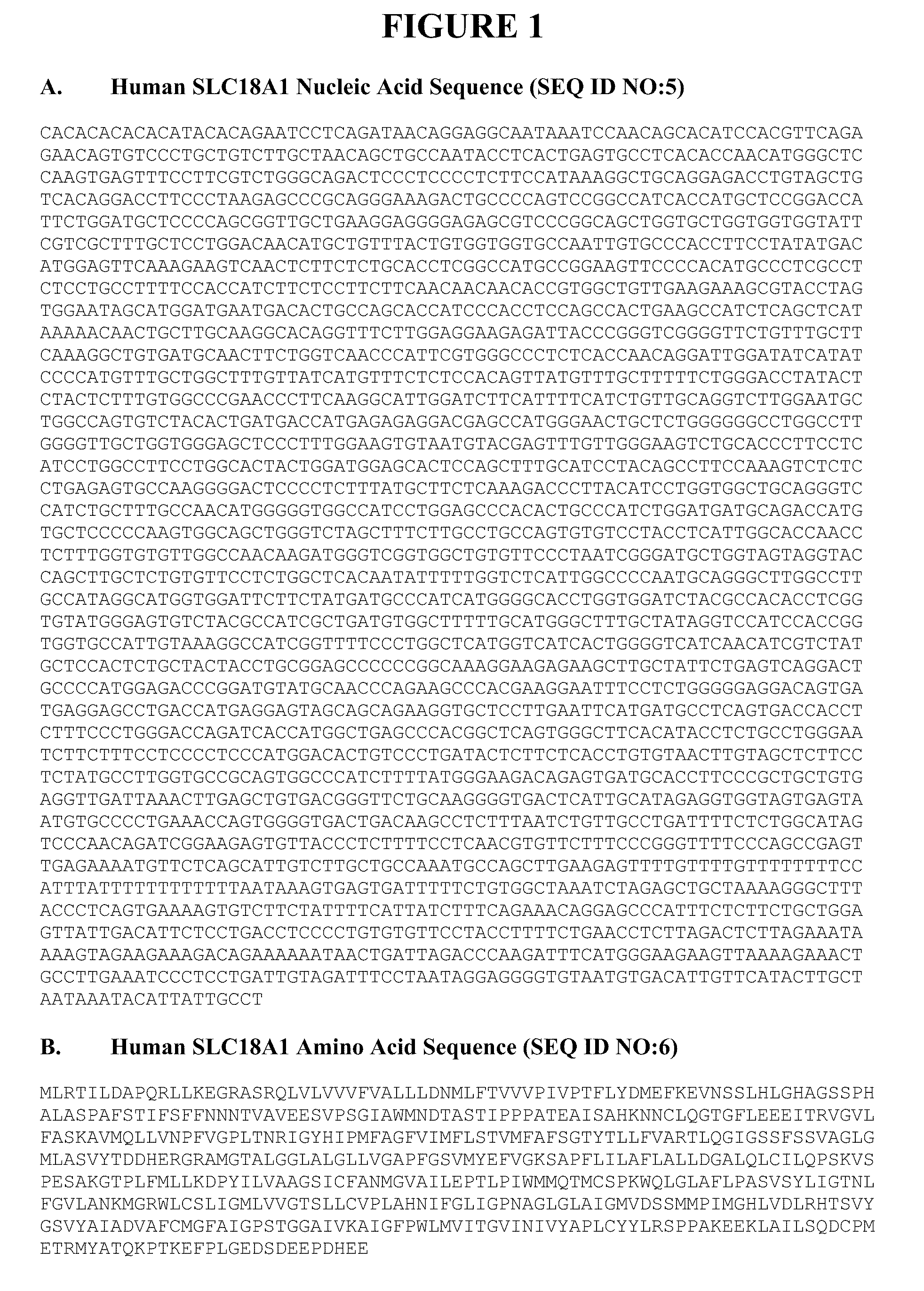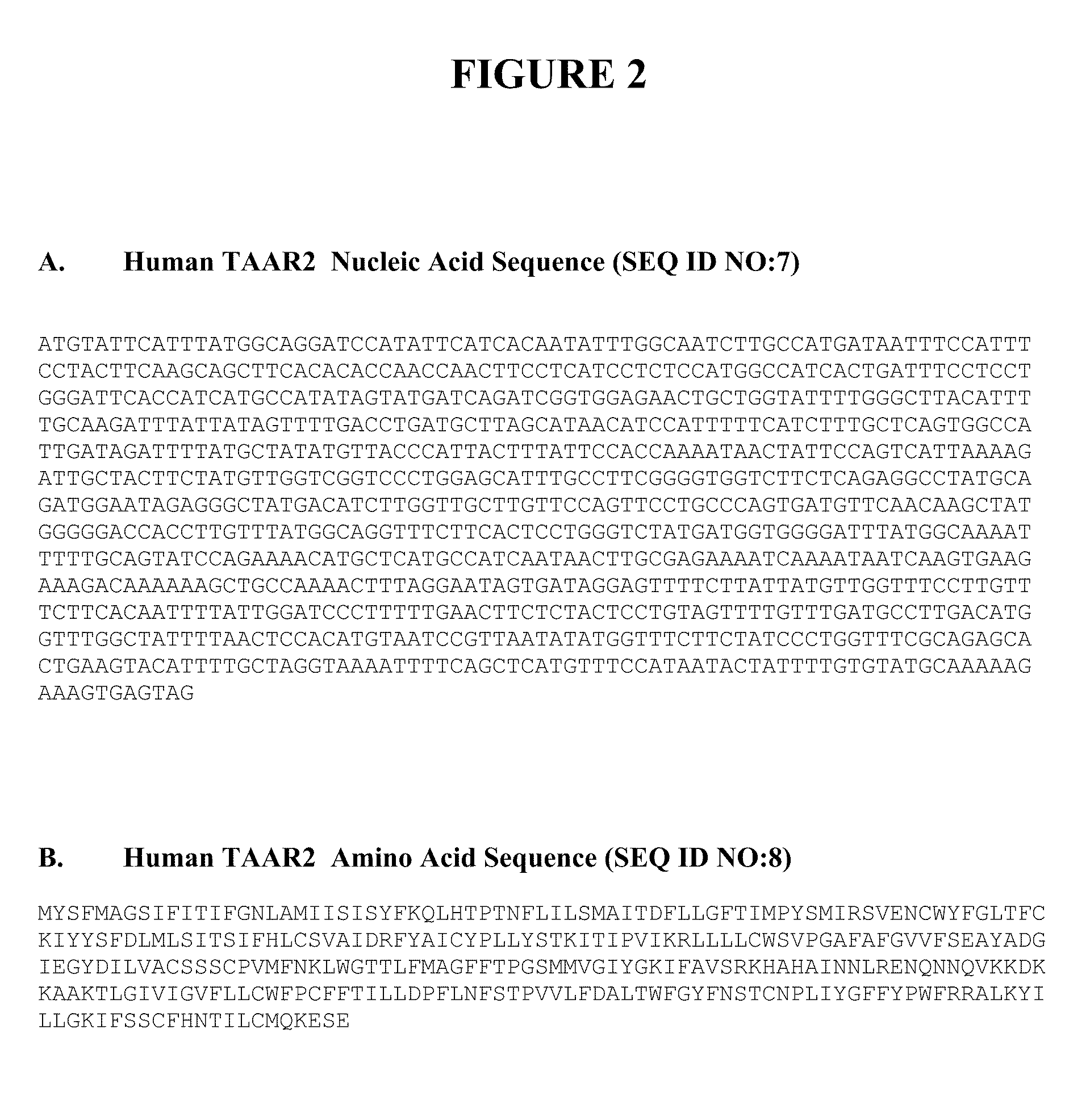Identifying increased susceptibility to schizophrenia
a technology of increased susceptibility and schizophrenia, applied in the direction of instruments, biochemistry apparatus and processes, material analysis, etc., can solve the problems of increased sexual drive, uncharacteristically poor judgment, and unrealistic beliefs in one's abilities and powers
- Summary
- Abstract
- Description
- Claims
- Application Information
AI Technical Summary
Benefits of technology
Problems solved by technology
Method used
Image
Examples
example 1
Materials and Methods
[0195]DNA was obtained from postmortem brain tissue from 28 unrelated Caucasian schizophrenics (23 (18 males, 5 females) from the Stanley Medical Research Institute (Bethesda, Md.) and 5 (4 males, 1 female) from Asterand, Inc. (Detroit, Mich.)) and from whole blood from 38 unrelated and unaffected Caucasians (29 males, 9 females) (Golden West Biologicals (Temecula, Calif.). Appropriate institute review board approval was obtained. Protein encoding exon regions for SLC18A1 and TAAR2 were PCR amplified and DNA sequenced.
example 2
Identification of SLC18A1 as a Biomarker of Neuropsychiatric Disorders
[0196]A missense homozygous mutation in exon 3 of SLC18A1 (A277C resulting in T4P) was identified and determined to be statistically significant (p value (2-tail)=0.036 with Fisher's Exact Test) within the neuropsychiatric diseased group versus the control group. Wild type SLC18A1, nucleotides 271-280, is shown in SEQ ID NO. 1 below. Mutant SLC18A1, nucleotides 271-280, is shown in SEQ ID NO. 2 below.
[0197]
SEQ ID NO. 1: 5′-ctccggacca-3′SEQ ID NO. 2: 5′-ctccggccca-3′
[0198]Allelic variations are shown in Table 1, below.
[0199]
TABLE 1Frequency of SLC18A1 genotypes at A277C (resulting in T4P) inindividuals for schizophrenic and control groupsSchizophrenic groupControl groupfrequency (%)frequency (%)Genotype(n = 28 (22 males))(n = 38 (29 males))C / C21.42.6A / C50.023.7A / A28.673.6
The C / C genotype, corresponding to a proline residue in the protein, occurred in 21.4% of the schizophrenic group and in only 2.6% of the control ...
example 3
Identification of TAAR2 as a Biomarker of Neuropsychiatric Disorders
[0200]A missense homozygous mutation in exon 2 of TAAR2 (A214G resulting in S36G)) was identified as statistically significant within the neuropsychiatric disease group versus controls. Wild type TAAR2, nucleotides 211-220, is shown in SEQ ID NO. 3 below. Mutant TAAR2, nucleotides 211-220, is shown in SEQ ID NO. 4 below.
[0201]
SEQ ID NO. 3: 5′-tgcaagattt-3′, Wild type TAAR2,nucleotides 211–220.SEQ ID NO. 4: 5′-tgcgagattt-3′, Mutant TAAR2,nucleotides 211–220.
[0202]Allelic variations of the samples are shown in Table 2. The G / G genotype, corresponding to a serine residue in place of glycine in the protein, occurred in 14.8% of the schizophrenic group and in only 5.3% of the control group. Thus, in some embodiments, a A213G mutation in TAAR2 exists as a diagnostic marker for neuropsychiatric disease (e.g., schizophrenia). Alternatively, the A / A genotype, corresponding to a glycine residue in the protein, occurred in 40....
PUM
| Property | Measurement | Unit |
|---|---|---|
| diameter | aaaaa | aaaaa |
| concentration | aaaaa | aaaaa |
| energy activity | aaaaa | aaaaa |
Abstract
Description
Claims
Application Information
 Login to View More
Login to View More - R&D
- Intellectual Property
- Life Sciences
- Materials
- Tech Scout
- Unparalleled Data Quality
- Higher Quality Content
- 60% Fewer Hallucinations
Browse by: Latest US Patents, China's latest patents, Technical Efficacy Thesaurus, Application Domain, Technology Topic, Popular Technical Reports.
© 2025 PatSnap. All rights reserved.Legal|Privacy policy|Modern Slavery Act Transparency Statement|Sitemap|About US| Contact US: help@patsnap.com


